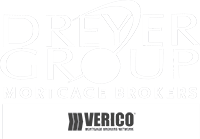Mortgage Financing in a Competitive Housing Market.
Zach Silverman | February 24, 2021
Canada is an interesting place to buy a property right now. If you’ve paid attention to the media at all over the last few weeks, you’ve probably heard that…
- Many people are still out of work due to COVID-19.
- The bank of Canada has forecasted rates will stay low for a long time.
- Although house prices keep rising, we may be in for a housing crash sooner than later.
While more recently, the media is reporting that…
- Canadian house prices are hitting record highs with no stop in sight.
- There is very little inventory available in housing markets across Canada.
- This week, bond rates have started to rise, and we can likely expect lenders to follow with an increase in fixed rates.
Needless to say, things can change pretty quickly. And while talking about the “Canadian housing market” is a lot like talking about the “weather in Canada”; it varies regionally and will be significantly different depending on where you live, one thing seems to be true, if you’re looking to buy a property, you can expect a competitive housing market.
Some markets will be hotter than others, but buying a home in a competitive housing market can be difficult.
You know you’re in a hot housing market when…
- Properties sell within days of listing on MLS.
- Properties are selling at or above the asking price.
- Properties are selling with competing offers.
- Properties are selling with competing offers well over the asking price.
Unfortunately, this can make you feel…
- Rushed to make decisions out of your comfort zone.
- Like you are being priced out of the market.
- Like you won’t ever find a property.
- Like you may need to change up your strategy to prevent being outbid by competing offers.
Now, if you get to this point in your home buying journey, you might begin to feel desperate. Understandably so. You might even look for ways to get your offer accepted and consider taking risks you wouldn't otherwise take. You may even consider (or be encouraged to) submit a subject-free offer.
While writing a subject-free offer might seem like a good solution to get your offer accepted, you need to know that it comes with significant risk. The biggest risk you take is that your deposit could be forfeit if you write an unconditional offer and your financing is declined.
The only time a subject-free offer is without risk is when you have enough money to purchase the property with the cash you have in the bank. So if you don’t have the cash to buy the house outright, the smart move is to mitigate your risk by including a “subject to financing” clause in the offer to purchase.
Mortgage financing is never guaranteed. The reason mortgage financing isn’t guaranteed is that securing mortgage financing is not only dependent on you the applicant, but also on the condition and value of the property. So even if you have the most stable income, an incredible credit history, and a large downpayment, if you need a mortgage, all lenders will assess the property’s condition and value before agreeing to mortgage financing.
Their scrutiny of the property is the same regardless of whether you include a subject to financing clause or make your offer unconditional.
Unfortunately, if you’re in a competitive situation, this is where you have to make quick decisions and put your best offer forward, but this is also when you’re at the highest risk of making mistakes. There are many reasons a lender can decline your mortgage application; here are just a few of them.
- The property doesn’t appraise for what you offer, forcing you to come up with considerably more for a downpayment. This is especially true in competitive situations.
- The MLS listing contains compromising information.
- The property was a former grow op or drug lab.
- The property has a special assessment pending.
- The condo insurance docs aren’t acceptable to the lender.
- The property doesn’t meet zoning or size requirements.
- The lender finds out there is asbestos, aluminum or knob and tube wiring, or an underground oil tank.
- Or anything else they deem too risky to lend money.
So what can you do? Well, the best place to start is to make sure you have all your ducks in a row. Here are things to consider.
- Do you have a mortgage preapproval in place?
- Do you have all the supporting documents submitted to your mortgage professional
- Are you working with a mortgage professional who has outlined the process, including how long they need to arrange financing?
- Do you have rock-solid personal guidelines for making an offer? This will help you to avoid making an emotional last-minute decision.
- Are you working with a real estate professional who is willing to help you stick to those personal guidelines?
Securing mortgage financing in a competitive housing market is tough. So if you find yourself without a concrete plan, please contact us anytime. We deal with high-stress situations like this regularly, and we would love to provide you with the counsel you need.
RECENT POSTS

The best place to start the mortgage process is with a pre-approval. But once you’ve been pre-approved for a mortgage and you’ve been shopping with location in mind, what happens when you can’t find a suitable property? There's no doubt about it; finding the perfect property within your price range is a difficult task, especially for first-time homebuyers. So, before buyer’s fatigue sets in, maybe you should consider adding the cost of renovations into your purchase. Buying a property and including the cost of renovations into the mortgage is available through a program called purchase plus improvements. When purchasing a home, you can add the cost of home upgrades into your mortgage, making it a great option if you can’t find something move-in ready and aren’t afraid to do a little work! But while this sounds simple enough, in all honestly, it’s quite the process. There are some pretty strict rules to follow, but nothing that you can’t handle with the guidance of an independent mortgage professional. Here’s a quick overview of the process. Firstly, you must provide quotes to the lender ahead of time for the work you would like to complete. It’s good to note that the renovations will have to increase the value of the property accordingly. From there, the lender doesn’t give you the money to do the upgrades; you have to come up with that yourself. However, once the work has been completed and verified by an appraiser, the lender will reimburse you and include the money in your mortgage. This program isn’t for everyone. Buying a home is a stressful endeavour in and of itself. The added stress of having to undertake renovations right away might not be a good idea. But then again, if you have the financial wherewithal to handle the cost of renovations and like the idea of making it yours from the start, then this might be just the option you’ve been looking for! Please connect directly; it would be a pleasure to walk through the exact process and outline what securing a purchase plus improvements would look like for you!

Credit. The ability of a customer to obtain goods or services before payment, based on the trust that you will make payments in the future. When you borrow money to buy a property, you’ll be required to prove that you have a good history of managing your credit. That is, making good on all your payments. But what exactly is a “good history of managing credit”? What are lenders looking at when they assess your credit report? If you’re new to managing your credit, an easy way to remember the minimum credit requirements for mortgage financing is the 2/2/2 rule. Two active trade lines established over a minimum period of two years, with a minimum limit of two thousand dollars, is what lenders are looking for. A trade line could be a credit card, an instalment loan, a car loan, or a line of credit; basically, anytime a lender extends credit to you. Your repayment history is kept on your credit report and generates a credit score. For a tradeline to be considered active, you must have used it for at least one month and then once every three months. To build a good credit history, both of your tradelines need to be used for at least two years. This history gives the lender confidence that you’ve established good credit habits over a decent length of time. Two thousand dollars is the bare minimum limit required on your trade lines. So if you have a credit card with a $1000 limit and a line of credit with a $2500 limit, you would be okay as your limit would be $3500. If you’re managing your credit well, chances are you will be offered a limit increase. It’s a good idea to take it. Mortgage Lenders want to know that you can handle borrowing money. Now, don’t confuse the limit with the balance. You don’t have to carry a balance on your trade lines for them to be considered active. To build credit, it’s best to use your tradelines but pay them off in full every month in the case of credit cards and make all your loan payments on time. A great way to use your credit is to pay your bills via direct withdrawal from your credit card, then set up a regular transfer from your bank account to pay off the credit card in full every month. Automation becomes your best friend. Just make sure you keep on top of your banking to ensure everything works as it should. Now, you might be thinking, what about my credit score, isn’t that important when talking about building a credit profile to secure a mortgage? Well, your credit score is important, but if you have two tradelines, reporting for two years, with a minimum limit of two thousand dollars, without missing any payments, your credit score will take care of itself, and you should have no worries. With that said, it never hurts to take a look at your credit every once and a while to ensure no errors are reported on your credit bureau. So, if you’re thinking about buying a property in the next couple of years and want to make sure that you have good enough credit to qualify, let’s talk. Connect anytime; it would be a pleasure to work with you and help you to understand better how your credit impacts mortgage qualification.

If you have a variable rate mortgage and recent economic news has you thinking about locking into a fixed rate, here’s what you can expect will happen. You can expect to pay a higher interest rate over the remainder of your term, while you could end up paying a significantly higher mortgage penalty should you need to break your mortgage before the end of your term. Now, each lender has a slightly different way that they handle the process of switching from a variable rate to a fixed rate. Still, it’s safe to say that regardless of which lender you’re with, you’ll end up paying more money in interest and potentially way more money down the line in mortgage penalties should you have to break your mortgage. Interest rates on fixed rate mortgages Fixed rate mortgages come with a higher interest rate than variable rate mortgages. If you’re a variable rate mortgage holder, this is one of the reasons you went variable in the first place; to secure the lower rate. The perception is that fixed rates are somewhat “safe” while variable rates are “uncertain.” And while it’s true that because the variable rate is tied to prime, it can increase (or decrease) within your term, there are controls in place to ensure that rates don’t take a roller coaster ride. The Bank of Canada has eight prescheduled rate announcements per year, where they rarely move more than 0.25% per announcement, making it impossible for your variable rate to double overnight. Penalties on fixed rate mortgages Each lender has a different way of calculating the cost to break a mortgage. However, generally speaking, breaking a variable rate mortgage will cost roughly three months of interest or approximately 0.5% of the total mortgage balance. While breaking a fixed rate mortgage could cost upwards of 4% of the total mortgage balance should you need to break it early and you’re required to pay an interest rate differential penalty. For example, on a $500k mortgage balance, the cost to break your variable rate would be roughly $2500, while the cost to break your fixed rate mortgage could be as high as $20,000, eight times more depending on the lender and how they calculate their interest rate differential penalty. The flexibility of a variable rate mortgage vs the cost of breaking a fixed rate mortgage is likely another reason you went with a variable rate in the first place. Breaking your mortgage contract Did you know that almost 60% of Canadians will break their current mortgage at an average of 38 months? And while you might have the best intention of staying with your existing mortgage for the remainder of your term, sometimes life happens, you need to make a change. Here’s is a list of potential reasons you might need to break your mortgage before the end of the term. Certainly worth reviewing before committing to a fixed rate mortgage. Sale of your property because of a job relocation. Purchase of a new home. Access equity from your home. Refinance your home to pay off consumer debt. Refinance your home to fund a new business. Because you got married, you combine assets and want to live together in a new property. Because you got divorced, you need to split up your assets and access the equity in your property Because you or someone close to you got sick Because you lost your job or because you got a new one You want to remove someone from the title. You want to pay off your mortgage before the maturity date. Essentially, locking your variable rate mortgage into a fixed rate is choosing to voluntarily pay more interest to the lender while giving up some of the flexibility should you need to break your mortgage. If you’d like to discuss this in greater detail, please connect anytime. It would be a pleasure to walk you through all your mortgage options and provide you with professional mortgage advice.




